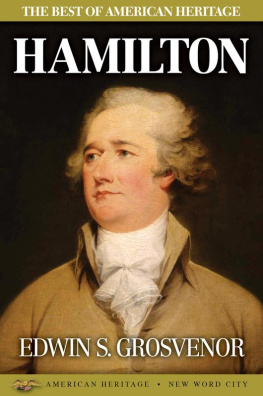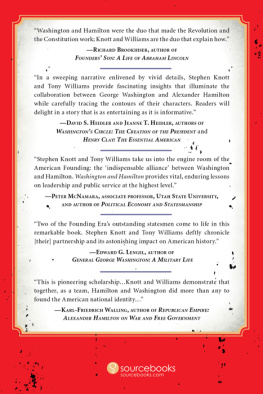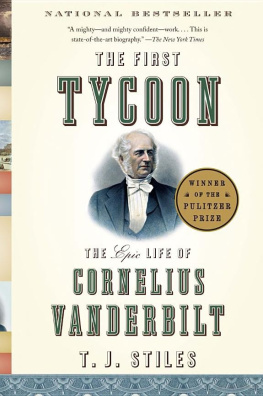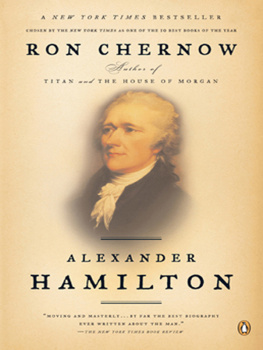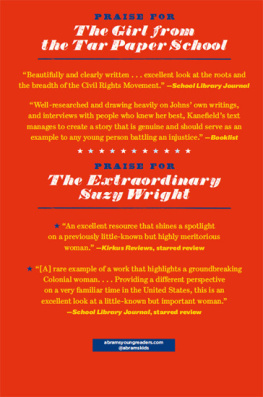Prince of Darkness
The Untold Story of Jeremiah G. Hamilton, Wall Streets First Black Millionaire
Shane White

St. Martins Press
New York
Thank you for buying this St. Martins Press ebook.
To receive special offers, bonus content, and info on new releases and other great reads, sign up for our newsletters.

Or visit us online at us.macmillan.com/newslettersignup
For email updates on the author, click here.
The author and publisher have provided this e-book to you for your personal use only. You may not make this e-book publicly available in any way. Copyright infringement is against the law. If you believe the copy of this e-book you are reading infringes on the authors copyright, please notify the publisher at: us.macmillanusa.com/piracy .
This one is for
Mac White
And for friends:
Stephen Garton, Glenda Slugaand Chris Hilliard
It was still dark when the reporter slipped into the Halls of Justice on Centre Street, an architectural disaster known on account of its misguided inspiration as the Egyptian Tombs, or simply the Tombs, and glanced at the previous nights watch returns. His eye fixed on the entry for a small-time crim who preyed mostly on other blacks in and around the Five Points, by the early 1840s the best-known slum in the world. In truth, there were scores of black con men just like him, living off their wits and a glib tongue. At regular intervals an irresistible white mark would come into view and be taken down. In this case, the black man and a couple of confederates had lured some dupe from out of town into a rum cellar and filched twenty-five dollars from his pocket. Next morning the victim raised hell. The Points was rife with stool pigeons and informers, and someone always talked. Late the previous night the police had gone straight to a well-known haunt to arrest the three black men. Not that the reporter was much concerned with the humdrum details of the crime or the arrest. What had caught his fancy was that this African American had taken the name John Jacob Astor. He had his lead item for the next days paper.
The idea of a black John Jacob Astor appealed immediately to the reporter. Police roundsmen had considerable latitude in the way they wrote their copy. A lively and often-irreverent take on the business before the citys courts became one of the signature features of most antebellum New York newspapers, particularly the Herald, this mans employer. Editors welcomed humor, often a very broad humor, and a black Astor had potential. In this instance the writer exercised restraint. All he had to do was insert an exclamation mark mid-sentence... seeing the name of John Jacob Astor! John Owen, and Thomas Lowrie, charged with high way robbery. The pieces italicized caption Whats in a Name? telegraphed to readers that there was a joke. And the joke worked because a black John Jacob Astor was an oxymoron.
The reporters quip would lose little of its punch over the rest of the century. Most white Americans viewed African Americans as irrelevant to economic progress, a people left floundering off to one side of capitalisms onward rush. Few would have disagreed with the comment of one irritated letter writer to the Morning Courier
Jerry Hamilton, better known as Jeremiah G. Hamilton, was a broker, a black man whose very existence flies in the face of our understanding of the way things were in nineteenth-century New York. Although a pioneer, far from being some novice feeling his way around the economys periphery, he was a Wall Street adept, a skilled and innovative financial manipulator. Unlike later black success stories, such as Madam C. J. Walker, the early-twentieth-century manufacturer of beauty products often assumed to be the first African American millionaire, who would make their fortunes selling goods to black consumers, Hamilton cut a swath through the lily-white New York business world of the middle decades of the nineteenth century. In this domain his depredations soon earned him the nickname Prince of Darkness. Others, with even less affection, simply called him Nigger Hamilton.
No one will ever erect a statue honoring Jeremiah Hamiltonhe was not a saint; indeed, he was at least as aggressive and ruthless as most antebellum businessmen. Rumors of counterfeiting and scams against insurance companies dogged him until he died, partly because even the more far-fetched stories often had elements of truth to them. Not that the ethics or business practices of many of his contemporaries could bear too much scrutiny, but Hamilton was the one saddled with the title Prince of Darkness. Wall Street was never going to be a level playing field for the trailblazing African American. Yet for all that, brokers and merchants generally were more interested in the color of the black mans money than his skin. Not that Hamilton gave a damn one way or the other: he simply brushed aside all obstacles placed in his way, or connived to get around them, and carried on amassing his fortune.
The black man cut a familiar figure downtown in the citys financial quarter. In 1836, according to the Courier and New-York Enquirer, he was well known in Wall street. Four years later, a Herald writer described him, backhandedly, as a highly respectable colored gentleman of some celebrity in Wall Street, and a New York Sun reporter identified him as being commonly known as the colored broker of Wall st.
Yet, for all his celebrity, Hamilton retained an aura of mystery. Although no one was certain where he came from, those claiming to be in the know persisted in whispering startling stories about a murky past. Shrewd judges agreed that the story of Jeremiah Hamiltons life, told properly, would make riveting reading. Some even hinted they might tell it. James Gordon Bennett, acerbic editor of the New York Herald, almost admiringly admitted in 1836: Jerry Hamilton is one of the most remarkable men of his race and we shall give a historical sketch of his life and adventures one of these days. Beach, content as he often was with name-calling, never supplied any such accounting. This too was unfortunate, for he knew more than enough to pen a revealing sketch of the elusive black broker.
Hamilton encouraged the mystery surrounding him and his past. After all, in a society as sensitive about race as antebellum New York, there was little point in someone with his appearance trying to fade into Wall Streets background. At different times and to different people he intimated that he came from Richmond, Virginia, or from somewhere in the Caribbean, perhaps Haiti or Cuba or even Puerto Rico. An easy charm deflected too close a scrutiny of his studied vagueness about the past. However, he was decidedly leery when anyone did start prying into his history, particularly into any of his business dealings. In October 1841, the Sunday Flash announced: Were preparing a sketch of Jeremiah G. Hamilton for the Gallery of Rascalities and Notorieties series. This teaser was part advertisement, more the opening move of an extortion attempt. Anyone threatened with such a public shaming knew that the editor usually would be amenable to negotiate whether or not he published. Blackmail was a lucrative sideline for many antebellum tabloids. A worried Hamilton dispatched Benjamin Day, his best friend and founder of the New York Sun, to sort things out with the Sunday Flash. As the phlegmatic newspaperman discovered, the forthcoming article was about to blacken Hamiltons character, charging him with all sorts of offences. Unruffled, Day simply called in a favor, and the editor of the Flash spiked the pieceit never appeared in print. There were things that Hamilton did not want anyone to know about his life and that no one ever will know.
Next page







